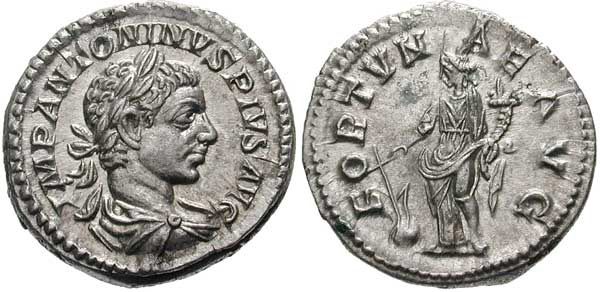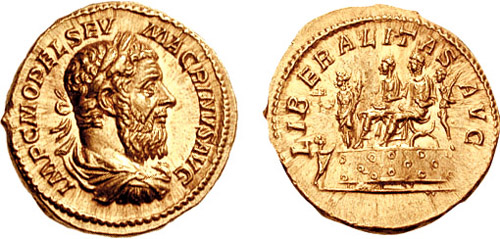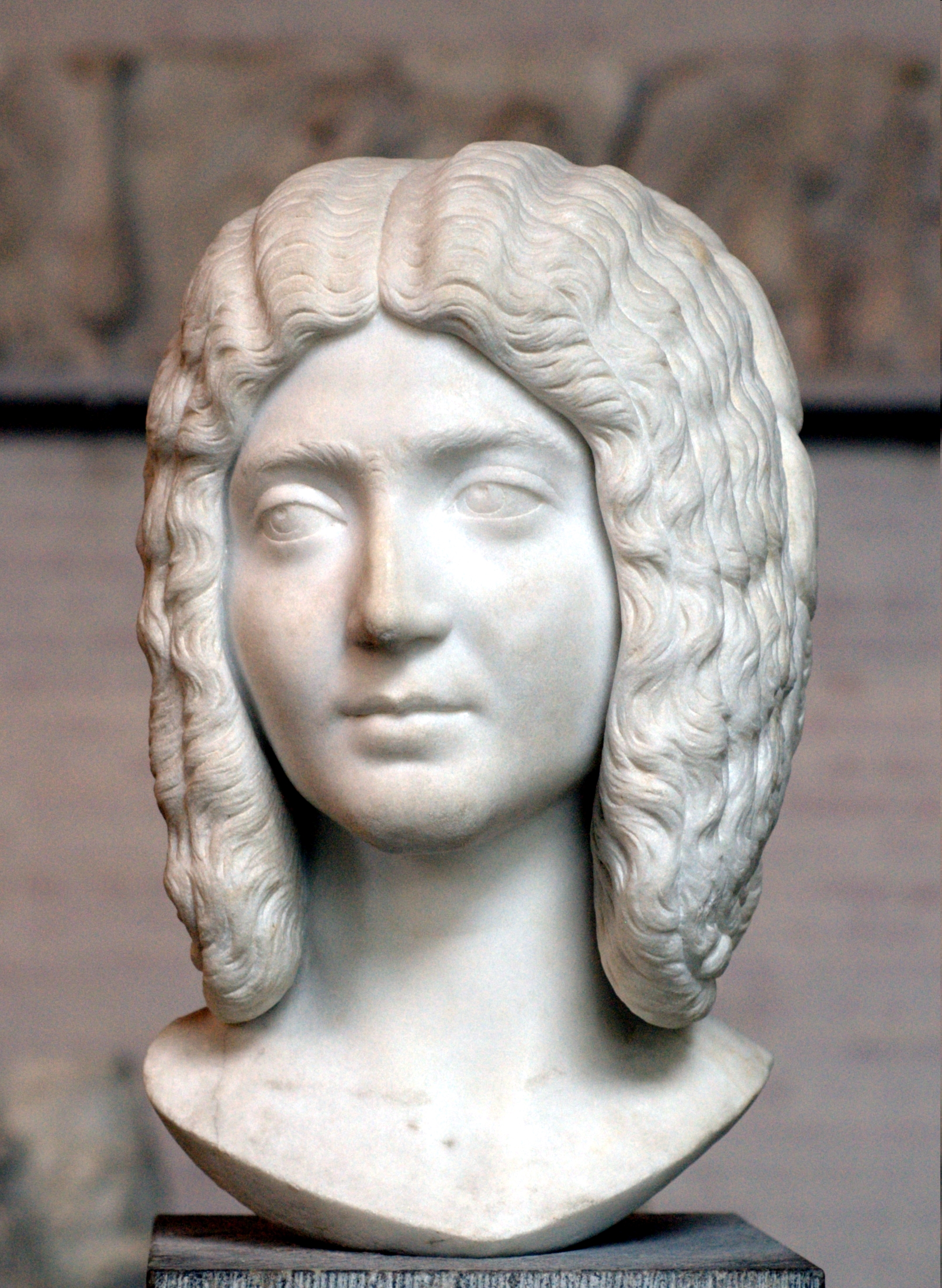|
218
Year 218 ( CCXVIII) was a common year starting on Thursday (link will display the full calendar) of the Julian calendar. At the time, it was known as the Year of the Consulship of Severus and Adventus (or, less frequently, year 971 ''Ab urbe condita''). The denomination 218 for this year has been used since the early medieval period, when the Anno Domini calendar era became the prevalent method in Europe for naming years. Events By place Roman Empire * May 16 – Julia Maesa, an aunt of the assassinated Emperor Caracalla, is banished to her home in Syria by the self-proclaimed emperor Macrinus, and declares her grandson Elagabalus, age 14, emperor of Rome. * June 8 – Battle of Antioch: Elagabalus defeats, with the support of the Syrian legions, the forces of Macrinus. Macrinus flees, but is captured near Chalcedon and later executed in Cappadocia. * Diadumenianus, son of Macrinus, escapes to the Parthian court, but is captured at Zeugma and also put to d ... [...More Info...] [...Related Items...] OR: [Wikipedia] [Google] [Baidu] |
Elagabalus
Marcus Aurelius Antoninus (born Sextus Varius Avitus Bassianus, 204 – 11/12 March 222), better known by his nickname "Elagabalus" (, ), was Roman emperor from 218 to 222, while he was still a teenager. His short reign was conspicuous for sex scandals and religious controversy. A close relative to the Severan dynasty, he came from a prominent Arab family in Emesa (Homs), Syria, where since his early youth he served as head priest of the sun god Elagabal. After the death of his cousin, the emperor Caracalla, Elagabalus was raised to the principate at 14 years of age in an army revolt instigated by his grandmother Julia Maesa against Caracalla's short-lived successor, Macrinus. He only posthumously became known by the Latinised name of his god. Later historians suggest Elagabalus showed a disregard for Roman religious traditions and sexual taboos. He replaced the traditional head of the Roman pantheon, Jupiter, with the deity Elagabal, of whom he had been high priest. H ... [...More Info...] [...Related Items...] OR: [Wikipedia] [Google] [Baidu] |
Macrinus
Marcus Opellius Macrinus (; – June 218) was Roman emperor from April 217 to June 218, reigning jointly with his young son Diadumenianus. As a member of the equestrian class, he became the first emperor who did not hail from the senatorial class and also the first emperor who never visited Rome during his reign. Before becoming emperor, Macrinus served under Emperor Caracalla as a praetorian prefect and dealt with Rome's civil affairs. He later conspired against Caracalla and had him murdered in a bid to protect his own life, succeeding him as emperor. Macrinus was proclaimed emperor of Rome by 11 April 217 while in the eastern provinces of the empire and was subsequently confirmed as such by the Senate; however, for the duration of his reign, he never had the opportunity to return to Rome. His predecessor's policies had left Rome's coffers empty and the empire at war with several kingdoms, including Parthia, Armenia and Dacia. As emperor, Macrinus first attempted to ena ... [...More Info...] [...Related Items...] OR: [Wikipedia] [Google] [Baidu] |
Diadumenian
Diadumenian (; la, Marcus Opellius Antoninus Diadumenianus; 14September 208 – June 218) was the son of the Roman Emperor Macrinus, and served as his co-ruler for a brief time in 218. His mother was Nonia Celsa, whose name may be fictitious. Diadumenian became ''caesar'' in May 217, shortly after his father's accession to the imperial throne. Elagabalus, a relative of the recently deceased Emperor Caracalla, revolted in May of the following year, and Diadumenian was elevated to co-emperor. After Macrinus was defeated in the Battle of Antioch on 8 June 218, Diadumenian was sent to the court of Artabanus IV of Parthia to ensure his safety; however, he was captured and executed along the way. After his death and that of his father, the Senate declared both of them enemies of Rome and had their names struck from the records and their images destroyed. History Diadumenian was born on 14 September 208, named Marcus Opellius Diadumenianus, to Macrinus, the praetorian prefec ... [...More Info...] [...Related Items...] OR: [Wikipedia] [Google] [Baidu] |
Battle Of Antioch (218)
The Battle of Antioch (8 June 218) was fought between the Roman army of the Emperor Macrinus and his rival Elagabalus, whose troops were commanded by General Gannys, probably a short distance from Antioch. Gannys' victory over Macrinus led to the downfall of the emperor and his replacement by Elagabalus. Macrinus' predecessor, Caracalla, was murdered by a disaffected soldier during a campaign against Parthia on 8 April 217. Macrinus himself may have had a hand in the murder of Caracalla. Within days of Caracalla's death, Macrinus was proclaimed emperor with the support of the army. At the time of his accession he inherited all of the problems that Caracalla had left for Rome—war against Parthia, threats from Armenia and Dacia, and extensive fiscal expenditures. Macrinus successfully concluded a peace with Parthia, but it came at considerable cost to Rome. Finally, his policies to reduce monetary expenditures only stoked discontent within the military. Caracalla's aunt, J ... [...More Info...] [...Related Items...] OR: [Wikipedia] [Google] [Baidu] |
Roman Numerals
Roman numerals are a numeral system that originated in ancient Rome and remained the usual way of writing numbers throughout Europe well into the Late Middle Ages. Numbers are written with combinations of letters from the Latin alphabet, each letter with a fixed integer value, modern style uses only these seven: The use of Roman numerals continued long after the decline of the Roman Empire. From the 14th century on, Roman numerals began to be replaced by Arabic numerals; however, this process was gradual, and the use of Roman numerals persists in some applications to this day. One place they are often seen is on clock faces. For instance, on the clock of Big Ben (designed in 1852), the hours from 1 to 12 are written as: The notations and can be read as "one less than five" (4) and "one less than ten" (9), although there is a tradition favouring representation of "4" as "" on Roman numeral clocks. Other common uses include year numbers on monuments and building ... [...More Info...] [...Related Items...] OR: [Wikipedia] [Google] [Baidu] |
Ji Ben
Ji Ben (died 218) was an imperial physician who lived during the late Eastern Han dynasty of China. In 218, he started a rebellion with several others in the imperial capital, Xu (許; present-day Xuchang, Henan), but the revolt was suppressed and the conspirators were captured and executed. Error in name Ji Ben's given name was actually "Pi" (). His name is believed to have been erroneously recorded as "Ben" () in historical texts to avoid naming taboo, because "Pi" was the personal name of Cao Pi, the first ruler of the Cao Wei state. Besides, the Chinese character for "Pi" might have actually been 㔻 instead of 丕. There were instances where 㔻 had been mistakenly written as 丕. Life Ji Ben served as a court physician (太醫令) in the imperial court of the Eastern Han dynasty during the reign of Emperor Xian (). Around the time, the Han central government had fallen under the control of Cao Cao, the Imperial Chancellor. Emperor Xian was merely a figurehead ruler. In 2 ... [...More Info...] [...Related Items...] OR: [Wikipedia] [Google] [Baidu] |
Cao Zizheng
Cao Zizheng (died 218) was a son of Cao Cao, a warlord who rose to power in the late Eastern Han dynasty and laid the foundation for the state of Cao Wei in the Three Kingdoms period of China. His mother was Lady Li (李姬), a concubine of Cao Cao. She also bore Cao Cao two other sons: Cao Zicheng and Cao Zijing. As his uncle Cao Shao (曹紹) had no heir, Cao Zizheng was adopted as Cao Shao's son. In 217, he was enfeoffed as the Marquis of Mei (郿侯). He died in the following year without a son to succeed him. In 220, Cao Zizheng's half-brother Cao Pi became the first emperor of the Cao Wei state after usurping the throne from Emperor Xian, the last emperor of the Han dynasty. The following year, he honoured Cao Zizheng with the posthumous title "Duke Dai of Mei" (郿戴公), and ordered Cao Fan (曹範), a son of Cao Ju, to be Cao Zizheng's heir. In 222, Cao Pi enfeoffed Cao Fan as the Marquis of Pingshi (平氏侯), but changed his title to Marquis of Chengwu (成武侯) ... [...More Info...] [...Related Items...] OR: [Wikipedia] [Google] [Baidu] |
Yu Si
Yu Si (218 - 271), courtesy name Shihong, was a Chinese military general and politician of the state of Eastern Wu during the Three Kingdoms period of China. Life Yu Si was the fourth son of Yu Fan, an official who served under Sun Quan, the founding emperor of Eastern Wu, and under Sun Quan's predecessor, Sun Ce. His ancestral home was in Yuyao County (餘姚縣), Kuaiji Commandery, which is in present-day Yuyao, Zhejiang. However, he was born in Nanhai Commandery (南海郡; around present-day Guangzhou, Guangdong) in Jiao Province because his father was exiled there by Sun Quan for showing disrespect on several occasions. Yu Si was 15 years old when his father died. After Yu Fan's death, Sun Quan freed his family from exile and allowed them to return to Yuyao County and bring Yu's remains back there for burial. In 258, the Wu regent Sun Chen deposed the emperor Sun Liang and replaced him with Sun Xiu, the Prince of Langya (琅邪王). Before Sun Xiu arrived at the palace f ... [...More Info...] [...Related Items...] OR: [Wikipedia] [Google] [Baidu] |
Gu Shao
Gu Shao ( 188–218), courtesy name Xiaoze, was an official serving under the warlord Sun Quan in the late Eastern Han dynasty of China. Family background Gu Shao's ancestral home was in Wu County, Wu Commandery, which is present-day Suzhou, Jiangsu. He was the eldest son of Gu Yong, who later became the second Imperial Chancellor of the state of Eastern Wu in the Three Kingdoms period. The Gu clan, which he was from, was one of the four most influential clans in Wu Commandery and also in the Jiangdong region at the time. Early life Gu Shao was well read in history and he took a keen interest in moral obligations between people. In his youth, he was as famous as his maternal uncle Lu Ji, and was considered to be of higher calibre as compared to other scions of notable families in Wu Commandery, such as Lu Xun, Zhang Dun (張敦) and Bu Jing (卜靜). Due to his fame and popularity, he attracted many visitors from throughout Wu Commandery and Yang Province who wanted t ... [...More Info...] [...Related Items...] OR: [Wikipedia] [Google] [Baidu] |
Julia Maesa
Julia Maesa (7 May before 160 AD – AD) was a member of the Severan dynasty of the Roman Empire who was the grandmother of emperors Elagabalus and Severus Alexander, elder sister of empress Julia Domna, and mother of Julia Soaemias and Julia Mamaea. She wielded influence during the reigns of her grandsons as Augusta of the Empire from 218 to her death, especially on their elevation to emperors. Born in Emesa, Syria (modern day Homs), to an Arab family of priests of the deity Elagabalus, Maesa and her sister Domna were the daughters of Julius Bassianus. Through her sister's marriage, Maesa became sister-in-law to Septimius Severus and aunt of Caracalla and Geta, who all became emperors. She married fellow Syrian Julius Avitus, who was of consular rank. She bore him two daughters, Soaemias and Mamaea, who became mothers of Elagabalus and Severus Alexander, respectively. As one of the Severan dynasty's prominent women, Maesa sought to return to power after her sister's sui ... [...More Info...] [...Related Items...] OR: [Wikipedia] [Google] [Baidu] |
Anno Domini
The terms (AD) and before Christ (BC) are used to label or number years in the Julian and Gregorian calendars. The term is Medieval Latin and means 'in the year of the Lord', but is often presented using "our Lord" instead of "the Lord", taken from the full original phrase "''anno Domini nostri Jesu Christi''", which translates to 'in the year of our Lord Jesus Christ'. The form "BC" is specific to English and equivalent abbreviations are used in other languages: the Latin form is but is rarely seen. This calendar era is based on the traditionally reckoned year of the conception or birth of Jesus, ''AD'' counting years from the start of this epoch and ''BC'' denoting years before the start of the era. There is no year zero in this scheme; thus ''the year AD 1 immediately follows the year 1 BC''. This dating system was devised in 525 by Dionysius Exiguus, but was not widely used until the 9th century. Traditionally, English follows Latin usage by placing the "AD" ... [...More Info...] [...Related Items...] OR: [Wikipedia] [Google] [Baidu] |
Ancient Rome
In modern historiography, ancient Rome refers to Roman people, Roman civilisation from the founding of the city of Rome in the 8th century BC to the collapse of the Western Roman Empire in the 5th century AD. It encompasses the Roman Kingdom (753–509 BC), Roman Republic (509–27 BC) and Roman Empire (27 BC–476 AD) until the fall of the western empire. Ancient Rome began as an Italic peoples, Italic settlement, traditionally dated to 753 BC, beside the River Tiber in the Roman Italy, Italian Peninsula. The settlement grew into the city and polity of Rome, and came to control its neighbours through a combination of treaties and military strength. It eventually dominated the Italian Peninsula, assimilated the Greece, Greek culture of southern Italy (Magna Grecia) and the Etruscans, Etruscan culture and acquired an Empire that took in much of Europe and the lands and peoples surrounding the Mediterranean Sea. It was among the List of largest empires, largest empires in the a ... [...More Info...] [...Related Items...] OR: [Wikipedia] [Google] [Baidu] |





